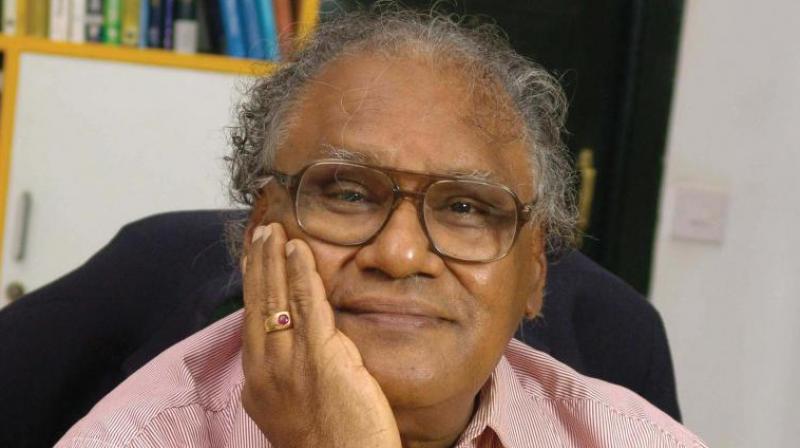Materials matter: Science that impacts society
We though nano electronics would have been the biggest, but now we find its nano medicine or regenerative engineering.

Bharat Ratna Prof. C.N.R. Rao, the first Asian chosen to receive the coveted Von Hippel Award for his research in materials science, provides a ring-side view of the transformation wrought by an obscure domain in Chemistry.
When I receive the award in Boston on November 29, I am going to talk about how we compete with a country like the United States in materials science though we face all sorts of constraints. When I started my research in materials research in 1959, nobody knew what it meant. I got a princely sum of Rs 3,000 as the first research grant, and the annual budget of the entire department (Department of Chemistry, Indian Institute of Science) was Rs 40,000. I decided to work on simple problems of materials because there was no spectrometer in India, and I was a spectroscopy person. I did not expect this area (materials science) to grow so much, just like the poem, Tall oaks from little acorns grow, which my teacher and Nobel laureate, Prof. H.C. Brown, quoted often.
Today, materials science has impacted every aspect of life: semiconductors, transistors, polymers, new and advanced materials which include nano materials and biomaterials, even treatment of cancer, and lubrication are the outcome of research in this area. A subject that was relatively unknown and obscure has grown to such an extent that it has metamorphosed into major research activity in MIT, University of California, Santa Barbara, where 57 faculty members are focusing on it, and in Japan, and China.
In RIKEN, Tokyo, 1,500 scientists and about 2,500 post-docs are working on materials science. Our budget for this area of new materials is abysmal. It is about Rs 600 crore for the next three years, while China has earmarked about 1,000 times more than India because the Chinese believe that they are going to control the world with new materials!
I was feeling a bit lonely for a few years because not many people have worked on new materials or developed new materials in our country. Even now, very few people work on materials science though we need many, many more scientists to carry out research on these materials. The results of research in materials science are visible in automobiles as the latest cars have several types of sensors, computers are getting faster, state-of-the-art telephones are available in the market, and so are LEDs. And, nano materials developed through tissue or regenerative engineering, like nano nose, help burn tissues affected by breast cancer, or use artificial skin for burns and artificial spine for those with spinal injuries. Prof. Robert Langer at MIT (Massachusetts Institute of Technology) is making artificial spine using nano technology.
We though nano electronics would have been the biggest, but now we find its nano medicine or regenerative engineering. And, a new material which can be used as skin for burns’ victims.
I hold two patents but have more than 1,500 papers as a result of my research. Just like the late Dr J.C. Bose, I value my research. If only we had a large number of engineers like in Princeton University or University of Pennsylvania, many phenomenon and processes we discovered in our labs could have turned into applications. Materials science can address the problem of unemployment. More materials for the computer industry, for treatment of health problems unique to our country, including cervical cancer, production of hydrocarbons for the pharmaceutical industry and fuel, could result from research in the new nano science institutes being built in Chandigarh and Bengaluru.
(As told to B.R. Srikanth)

